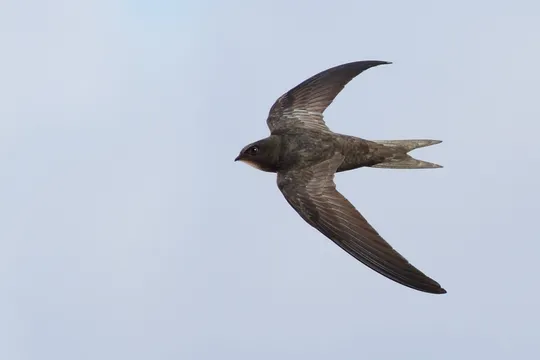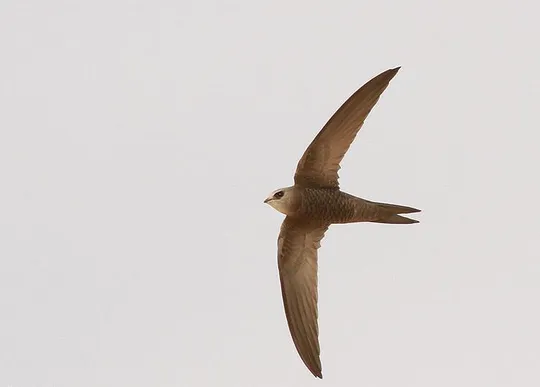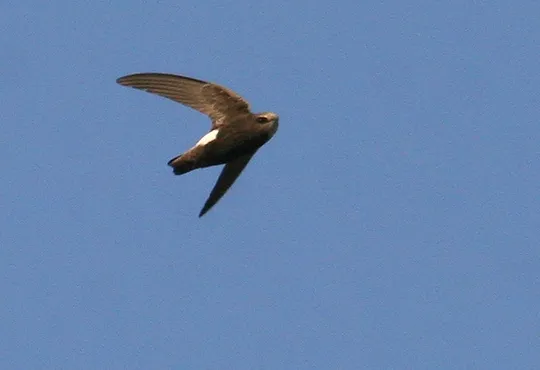Apus melba
 Data Deficient
Data Deficient
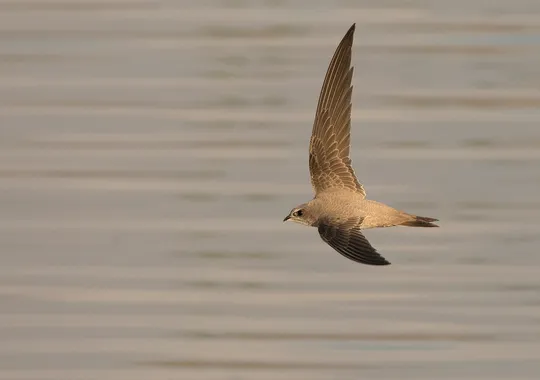
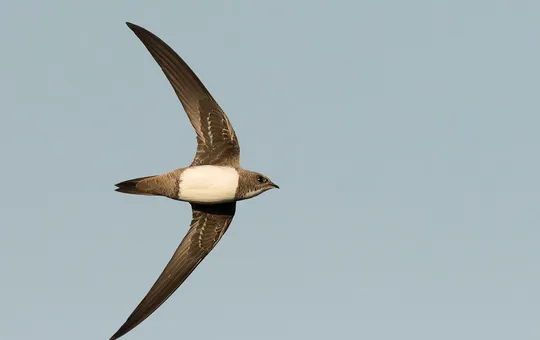
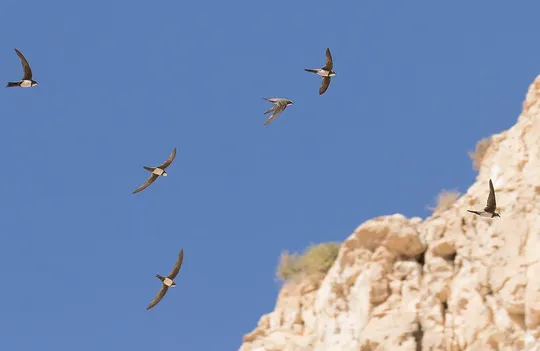

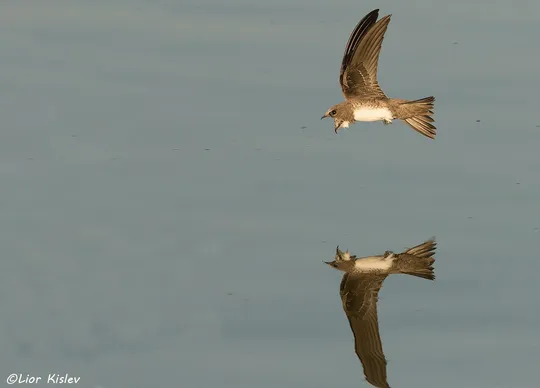
| Habitats | Desert Cliffs, Mediterranean Cliffs |
|---|---|
| Presence In Israel | Migrant, Summer |
| Breeding In Israel | Breeder |
| Migration Types | Long Range |
| Zoographical Zones | Mediterranean, Irano-Turanian |
| Landscape Types | Mountainous, Cliffs |
| Vegetation Densities | Low |
| Nest Locations | Cliffs, Buildings |
| Diet Types | Invertebrate |
| Foraging Grounds | Aerial |
| Body Sizes | Small (up to 500g) |
| Threat Factors | Unknown |
The Alpine Swift, like other swifts, spends almost all its time in the air. It is specifically adapted to flight, with a compact body and long, narrow, pointed wings. It has a small slightly curved triangular bill, and a large gape that allows it to catch insects in flight. Its tail is short and forked. Plumage is brownish-grey, with a white belly and throat, separated by a brown neckband. Its characteristic flight includes rapid deep wingbeats followed by glides. When foraging, it performs rapid maneuvers, while sounding a series of sharp calls. The Alpine Swift is a gregarious bird that nests in colonies and flies in flocks in its wintering areas as well.
The Alpine Swift is a common passage migrant, a relatively common summer breeder and a rare winter visitor. During migration, flocks can be seen throughout Israel. It breeds in most of the mountainous regions in Israel, from the upper Galilee in the north to the Judean Desert canyons and Negev Highlands in the south.
The Alpine Swift breeds in colonies in mountainous and cliff areas. The nests are often located in crevices and on the ceilings of large caves. In Europe it also nests in tall buildings, similar to the Common Swift, while in Israel it can also be found nesting under tall bridges and in road tunnels.
- פז, ע. 1986. עופות. מתוך אלון, ע. (עורך), החי והצומח של ארץ ישראל. כרך 6. הוצאת משרד הביטחון, ישראל.
- Shirihai, H., 1996. The Birds of Israel. Academic Press, London.
- Symes, A. 2013. Species generation lengths. Unpublished, BirdLife International.
- Species page at Birdlife International
Current Occupancy Map
| Data Missing | Sporadic | Limited Sites | Low Density | High Density |
|---|---|---|---|---|
| 0 | 0 | 0 | 0 | 0 |
Distribution maps
The maps presented here provide visual information on the distribution of species in Israel from the past and present, and the changes in occupancy and breeding density during the comparison period. For further reading
Relative Abundance 2010-2020
Breeding density values in the current decade as determined from experts' opinion and observations from databases.
| Data Missing | Sporadic | Limited Sites | Low Density | High Density |
|---|---|---|---|---|
| 8 | 12 | 12 | 21 | 19 |
Relative Abundance 1980-1990
Density values based primarily on the book The Birds of Israel (Shirihai 1996).
| Data Missing | Sporadic | Limited Sites | Low Density | High Density |
|---|---|---|---|---|
| 5 | 14 | 14 | 17 | 22 |
Occupancy 1990-2020
The map shows differences in the species breeding distribution between the 1980's breeding map and the current weighted breeding evaluation. Negative value - species previously bred in the grid and is not presently breeding; positive value - species has not previously bred in the grid and is currently breeding.
| Data Missing | No Change | Occupancy Increase | Occupancy Decrease |
|---|---|---|---|
| 6 | 35 | 1 | 9 |
Change in Relative Abundance 1990-2020
The map shows the changes in the relative abundance of a species in each of the distribution grids between the breeding map of the 1980s and the weighted current breeding evaluation. Negative values - decline in abundance; positive values - increase in abundance; zero - no change in abundance.
| 80 to 100 | 50 | 20 to 30 | No Change | 30- to 20- | 50- | 100- to 80- | Data Missing |
|---|---|---|---|---|---|---|---|
| 0 | 4 | 2 | 22 | 12 | 14 | 11 | 16 |
| Rarity | |
|---|---|
| Vulnerability | |
| Attractiveness | |
| Endemism | |
| Red number | |
| Peripherality | |
| IUCN category | |
| Threat Definition according to the red book |
 Contributed:
Contributed: 